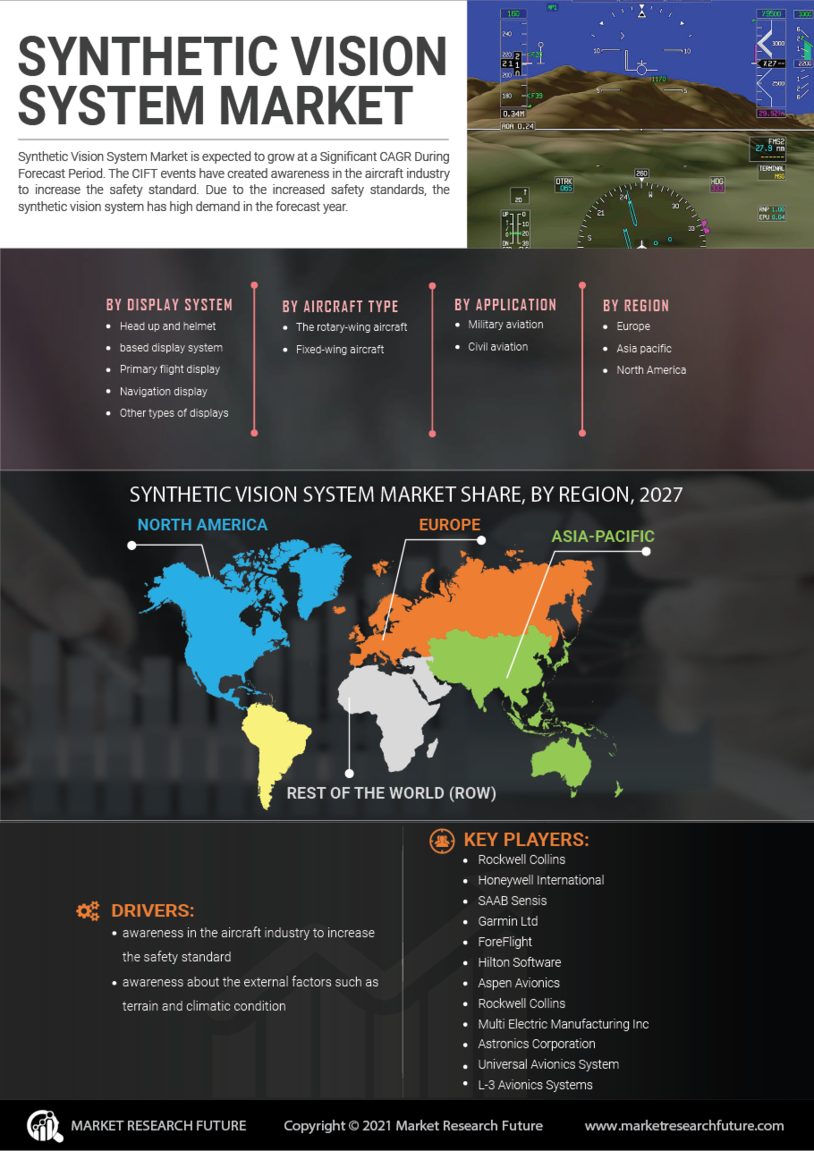Recent advancements in Aircraft Synthetic Vision Systems (SVS) have significantly enhanced aviation safety and operational efficiency. These systems provide pilots with real-time, three-dimensional representations of terrain, obstacles, and runway environments, especially beneficial during low-visibility conditions.
In November 2024
, Collins Aerospace's Pro Line Fusion avionics suite, featuring an advanced SVS, received certification from the European Aviation Safety Agency (EASA) for installation in Cessna Citation CJ3 aircraft registered in Europe. This certification marks a significant milestone, as the Pro Line Fusion system has already been integrated into approximately 32 aircraft in the United States. The system offers 3D terrain mapping, infrared vision, and interactive displays, enhancing situational awareness for pilots operating in challenging environments.
In August 2024
, a market analysis projected that the global Aircraft Synthetic Vision Systems market, valued at USD 8.2 billion in 2023, is expected to reach USD 14.3 billion by 2033. This growth, at a compound annual rate of 5.72%, underscores the increasing adoption of SVS technologies across various aircraft categories, including business jets, turboprops, and regional airliners. Gulfstream Aerospace has been a pioneer in integrating synthetic vision technology into business jets. The company achieved a significant milestone by conducting a flight using an experimental business jet equipped with both synthetic and enhanced vision systems, demonstrating the potential of these technologies to improve flight safety and operational capabilitie
Competitive Landscape
The synthetic vision system market is less competitive. It is a high-end technology market with plenty of market developments. During the forecast period, the key players are enhancing portfolio and product awareness. Also, the promotion of underwater synthetic vision system sensor will be more. The arenado synthetic vision system and bombardier synthetic vision system are two crucial products in the landscape. All these strategies will offer plenty of growth prospects to the market.
The key players of the synthetic vision system market are
- Rockwell Collins
- Honeywell International
- SAAB Sensis
- Garmin Ltd
- ForeFlight
- Hilton Software
- Aspen Avionics
- Rockwell Collins
- Multi Electric Manufacturing Inc
- Astronics Corporation
- Universal Avionics System
- L-3 Avionics Systems
Segment Overview
By display system
- Head up and helmet based display system
- Primary flight display
- Navigation display
- Other types of displays
By aircraft type
- The rotary-wing aircraft
- Fixed-wing aircraft
By application
- Military aviation
- Civil aviation
By region
- Europe
- Asia pacific
- North America
End users
- Aerospace companies
- Regulatory bodies
- Aircraft manufactures
- Defence companies
- Defence organisations
- Aerospace companies
Regional Analysis
North America will outgrow the synthetic vision system market in the forecast period. The defence and aerospace sector are the crucial drivers of this market. The well-developed market players are taking plenty of measures to improve production. Europe is another region with a significant synthetic vision market share. In Europe, the government initiative to increase aircraft safety is increasing the market growth. Also, product and technological enhancements are other factors that propel market growth. The Asia Pacific region will witness an exponential growth rate in the forecast year 2023. The market expansion rate is massive in Asia pacific.
China, India, Japan and South Korea are contributors to the global market. The entry of new market players will enable more growth opportunities for the market.
Recent Developments
A solid aviation infrastructure supports the region's mature aerospace sector. The area's regional and international airline carriers have purchased multiple aircraft due to increased air traffic. Boeing, one of the major US-based aircraft OEMs, creates a significant demand for airplane fire prevention systems.










Leave a Comment